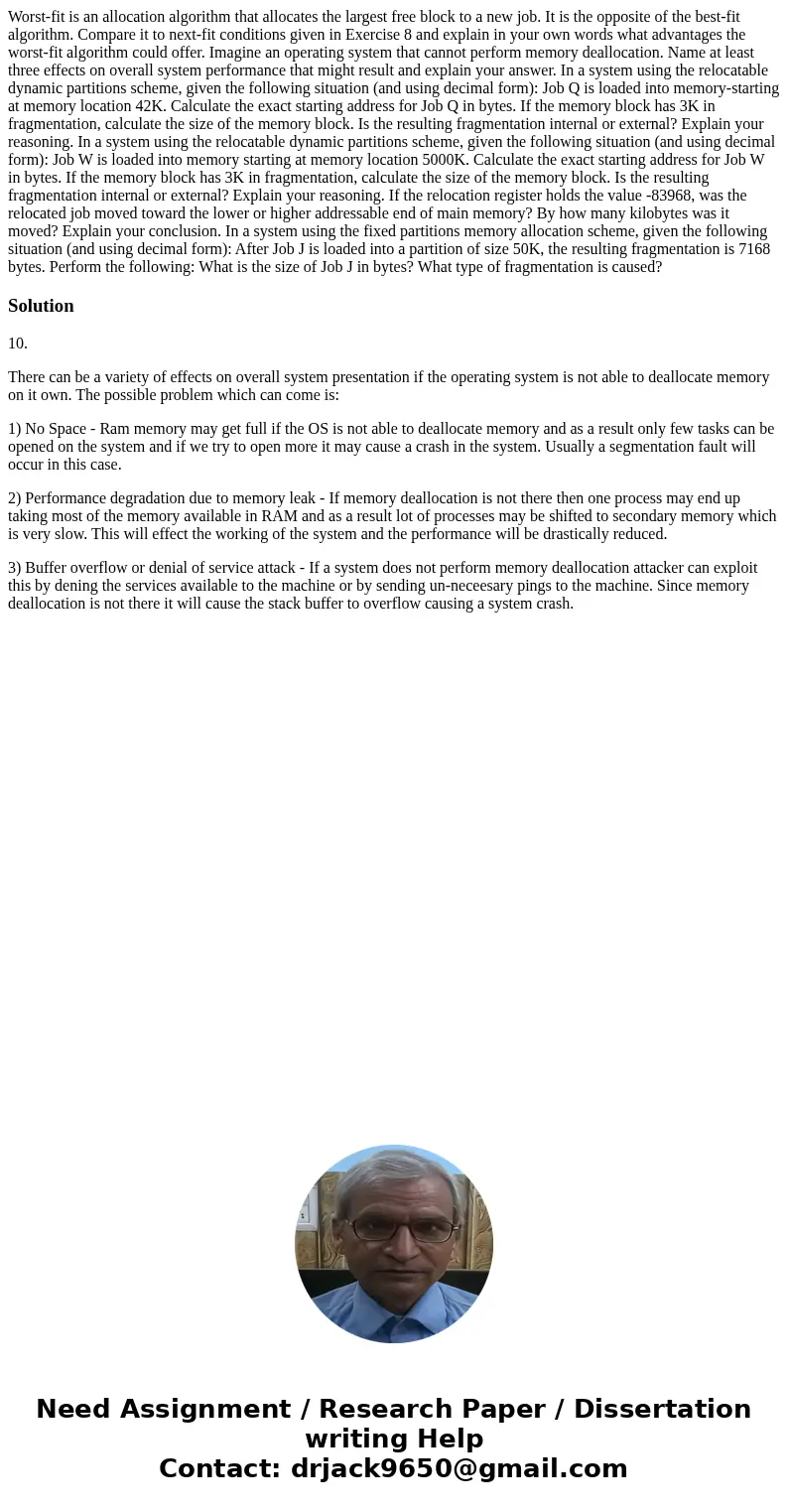Worst-fit is an allocation algorithm that allocates the largest free block to a new job. It is the opposite of the best-fit algorithm. Compare it to next-fit conditions given in Exercise 8 and explain in your own words what advantages the worst-fit algorithm could offer. Imagine an operating system that cannot perform memory deallocation. Name at least three effects on overall system performance that might result and explain your answer. In a system using the relocatable dynamic partitions scheme, given the following situation (and using decimal form): Job Q is loaded into memory-starting at memory location 42K. Calculate the exact starting address for Job Q in bytes. If the memory block has 3K in fragmentation, calculate the size of the memory block. Is the resulting fragmentation internal or external? Explain your reasoning. In a system using the relocatable dynamic partitions scheme, given the following situation (and using decimal form): Job W is loaded into memory starting at memory location 5000K. Calculate the exact starting address for Job W in bytes. If the memory block has 3K in fragmentation, calculate the size of the memory block. Is the resulting fragmentation internal or external? Explain your reasoning. If the relocation register holds the value -83968, was the relocated job moved toward the lower or higher addressable end of main memory? By how many kilobytes was it moved? Explain your conclusion. In a system using the fixed partitions memory allocation scheme, given the following situation (and using decimal form): After Job J is loaded into a partition of size 50K, the resulting fragmentation is 7168 bytes. Perform the following: What is the size of Job J in bytes? What type of fragmentation is caused?
10.
There can be a variety of effects on overall system presentation if the operating system is not able to deallocate memory on it own. The possible problem which can come is:
1) No Space - Ram memory may get full if the OS is not able to deallocate memory and as a result only few tasks can be opened on the system and if we try to open more it may cause a crash in the system. Usually a segmentation fault will occur in this case.
2) Performance degradation due to memory leak - If memory deallocation is not there then one process may end up taking most of the memory available in RAM and as a result lot of processes may be shifted to secondary memory which is very slow. This will effect the working of the system and the performance will be drastically reduced.
3) Buffer overflow or denial of service attack - If a system does not perform memory deallocation attacker can exploit this by dening the services available to the machine or by sending un-neceesary pings to the machine. Since memory deallocation is not there it will cause the stack buffer to overflow causing a system crash.

 Homework Sourse
Homework Sourse